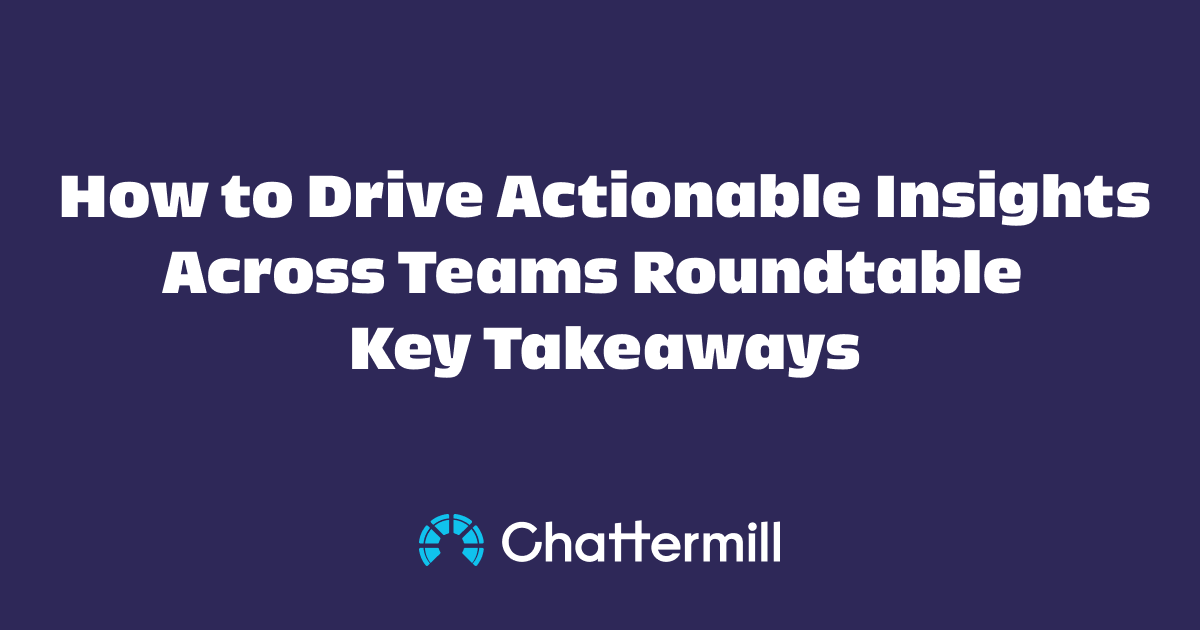Not only is AI transforming the way we park our cars, order coffee, and deposit paychecks, it’s dramatically affecting customer experience (CX) in ways many users might not even realize. From friendly chatbots to pitch-perfect content recommendations, AI is changing CX by minimizing customer service friction and allowing the integration of self-service and personalization.
And, it’s important to understand that this transformation is a two-way street. AI innovations in customer experience are also allowing brands to gain better insights into what their customers really think and feel, thereby providing better customer service and more tailored personalization. In fact, market research firm IDC predicts that global spending on cognitive and AI systems will hit $57.6 billion by 2021, as brands continue to recognize the enhanced decision-making value these CX initiatives hold.
Below are 10 examples of ways AI is transforming the customer experience, from both a consumer and brand perspective:
5 AI Innovations for Customers
AI is such an integrated part of the consumer lifestyle that many customers may not realize how their favorite brands are utilizing this strategy.
1. Personalized Recommendations
You’re searching on Google for the best meal delivery kit, and suddenly every other Instagram post is an advertisement for food delivery. This is because companies are using AI to “get to know” their customers better, and serve them ads that they are more likely to be interested in (and therefore convert) as part of their CX strategy. You’ll also notice this same strategy when it comes to music and video content providers.
Example: Netflix is a perfect illustration of AI informing customer recommendations. You may have noticed that when you first set up a Netflix account, the “Recommended for You” section includes a smattering of generally popular shows and movies, as the AI doesn’t yet have enough information about you.
As you begin to watch certain programs, Netflix’s AI gathers data about your likes and dislikes and is able to offer you increasingly niche and specific content. This is why some people get upset when people use their Netflix profile without permission - it could mess up the AI’s algorithm and affect the accuracy of recommendations.
2. Chatbots That Are Happy to See You
Chatbots used to get a bad rap, but the AI technology behind them has become increasingly sophisticated over the past few years by using natural language processing. This means that customers are able to interact with brand reps who are programmed to always be happy and helpful, unlike real humans who may be having a bad day.
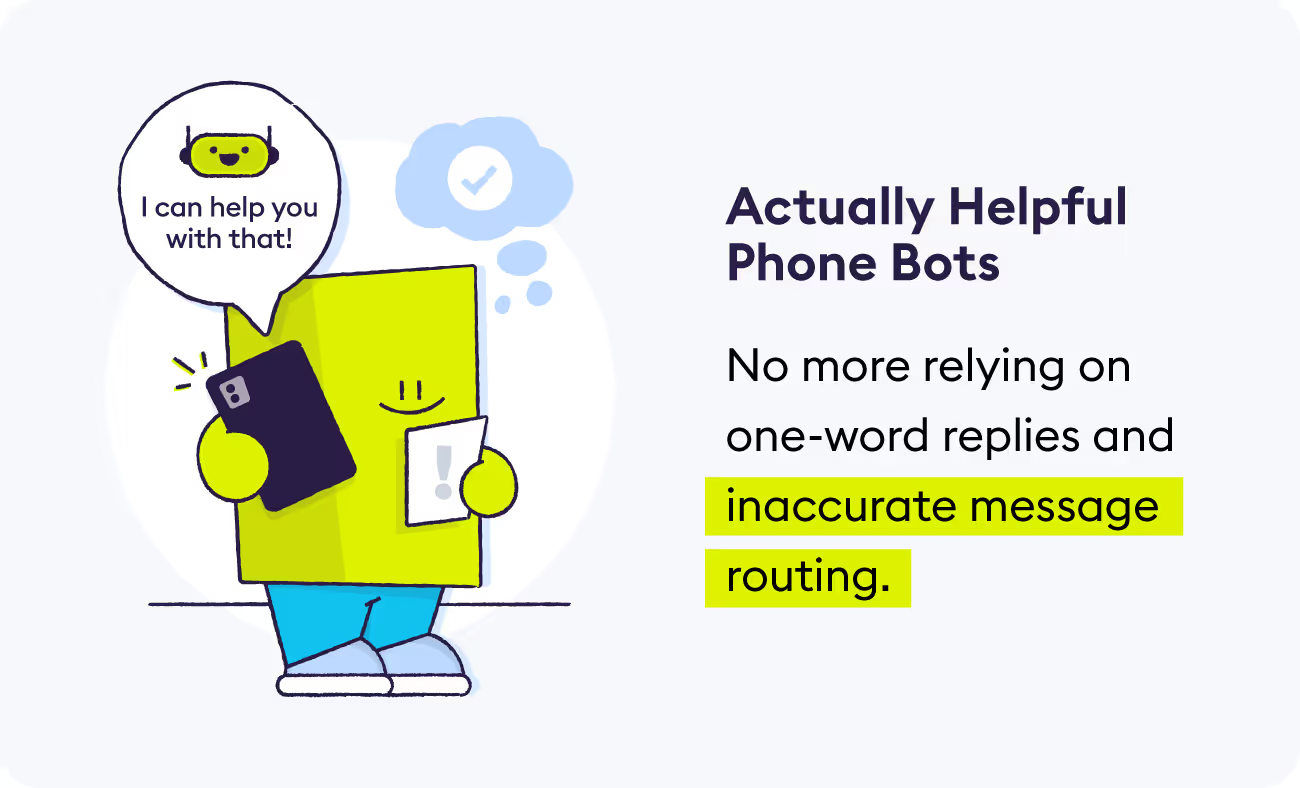
Example: Insurance startup Lemonade uses a chatbot named Maya to guide users through policy signups and changes. Interacting with Maya is as easy as can be, as she’s able to use text analytics to get to the root of any issues in seconds, and either resolve the problem or forward it to the real humans on the customer service team. She’s able to work and scale faster than any human team ever could.
3. AutoPay and Purchase
AI and machine learning are making our lives easier in a number of obvious ways, such as cars that park (and someday drive) themselves or auto-filtering spam from our inboxes. It’s also allowing for greater levels of self-service with voice control that helps customers stay on top of daily tasks.
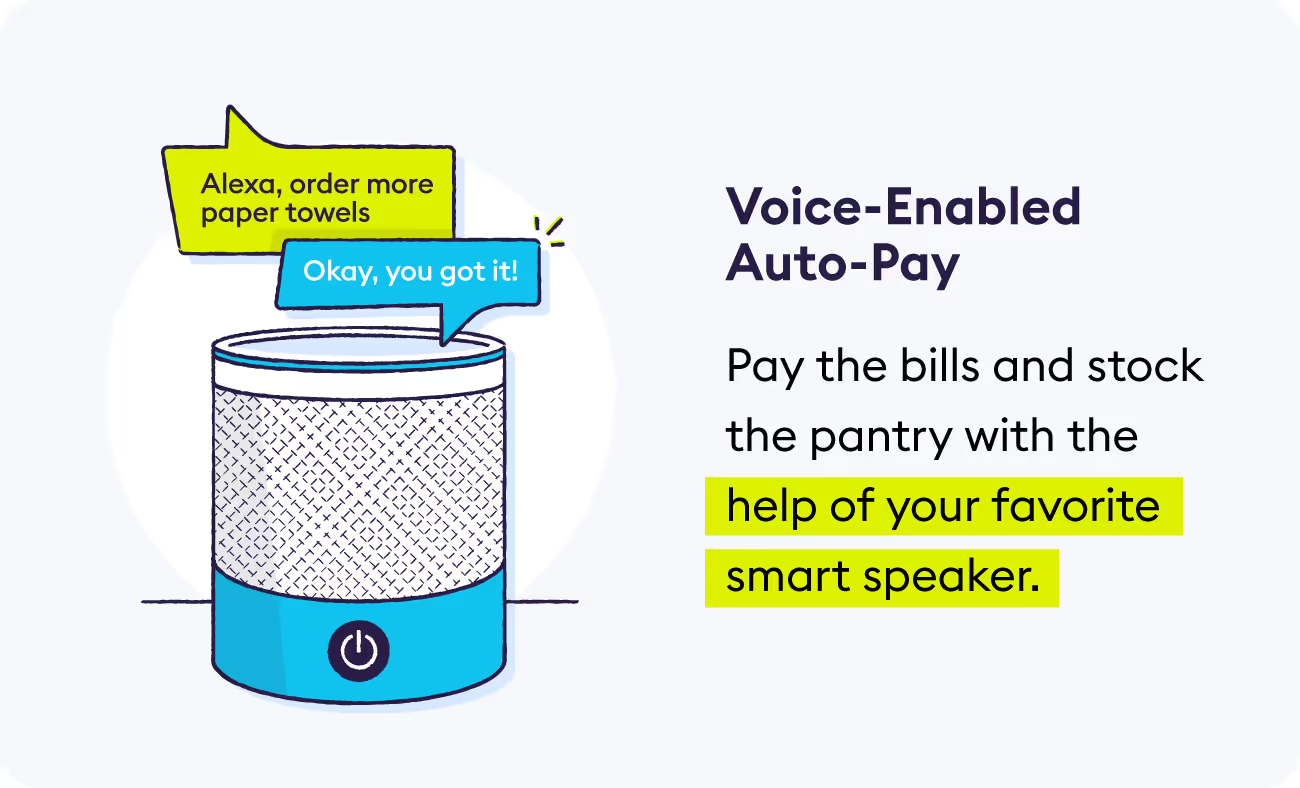
Example: Amazon’s Alexa now enables users to pay utility bills through voice commands to accounts that are set up through their Amazon account. The feature also includes commands and queries for managing payments, such as asking Alexa how the current monthly bill compares to previous charges. For general shopping needs, Alexa can also give recommendations on top products, reorder previously purchased items, update users on their order statuses, along with functions to make paying and purchasing online easier than ever.
4. Fix Problems at Any Time
Another benefit of customer service bots are that they can help fix customer issues at any time of day. In days past, if a customer needed to update their shipping address or make an appointment, they would have to wait until the next business day to call in, and by then it may have been too late. Nowadays, chatbots are easily able to address most customer needs at any time, which is very convenient for users who may not have the ability to make a personal phone call during the workday.
Example: Sephora’s Reservation Assistant is a Facebook Messenger bot that allows users to schedule in-store makeover appointments. Reservation Assistant helps Sephora capitalize on conversions, as it can handle any last-minute or spur-of-the-moment requests that may not have been followed through on if a call-averse Millennial was on the other line. In fact, Sephora’s bot has an 11% higher conversion rate than any of their other makeover appointment channels.
5. Natural Language Interface on Phone Calls
Perhaps even more disliked in recent years than chatbots, phone bots, or Interactive Voice Response (IVR) systems, are also greatly benefiting from gains in natural language processing over the past five years. Instead of shouting “yes” or “no” into your phone to try to get a bot to understand you, phone bots can now understand a much wider variety of queries and inputs to help callers reach the right destination. Phone bots are particularly popular in the banking sector, as customers and representatives are dealing with sensitive information that they may not be comfortable sharing over text or email.
Example: Bank of America’s Erica bot was one of the first on the scene in the financial phone bot revolution. Erica is both voice and text-enabled and helps customers with a variety of complex tasks like disputing charges, recurring bill reminders, and tracking spending habits.
Now that you understand more about how AI continues to change the customer experience on the consumer side of things, it’s time to flip things around and see how AI is affecting brands and their decision-making.
5 AI Innovations for Brands
Since CX is a two-way street, there are a number of revolutionary ways that AI innovations are allowing brands to do things differently.
1. Streamline Purchasing Process
As we discussed above, AI streamlines the customer journey by reducing the friction that may have caused a customer to be dissatisfied. Humans desire simplicity, and today’s generation of online shoppers are notoriously phone-shy. The ability to make changes to an order at any time and communicate effectively with a bot is a huge draw for customers.
2. Better Understand Your Customers
AI-powered text analytics allows brands to better understand the customer experience at scale. It’s just not possible to read every comment, so without this type of technology, customer feedback remains unseen and unheard. AI-backed sentiment tracking enables brands to pinpoint the parts of the customer journey that users take issue with and uncover hidden insights. These insights can then be used to enhance the product, marketing strategy, and brand messaging.
For example, printing company Moo strives to be a truly customer-centered company and promises to “move heaven and earth so that you’re happy with your order.” By partnering with Chattermill’s text analytics capabilities, Moo was able to live up to their brand messaging and reap the rewards of providing an enhanced customer experience, such as a 20-point increase in their Canadian Net Promoter Score. Learn more about Moo’s success here.
3. Analyze Visual Engagement
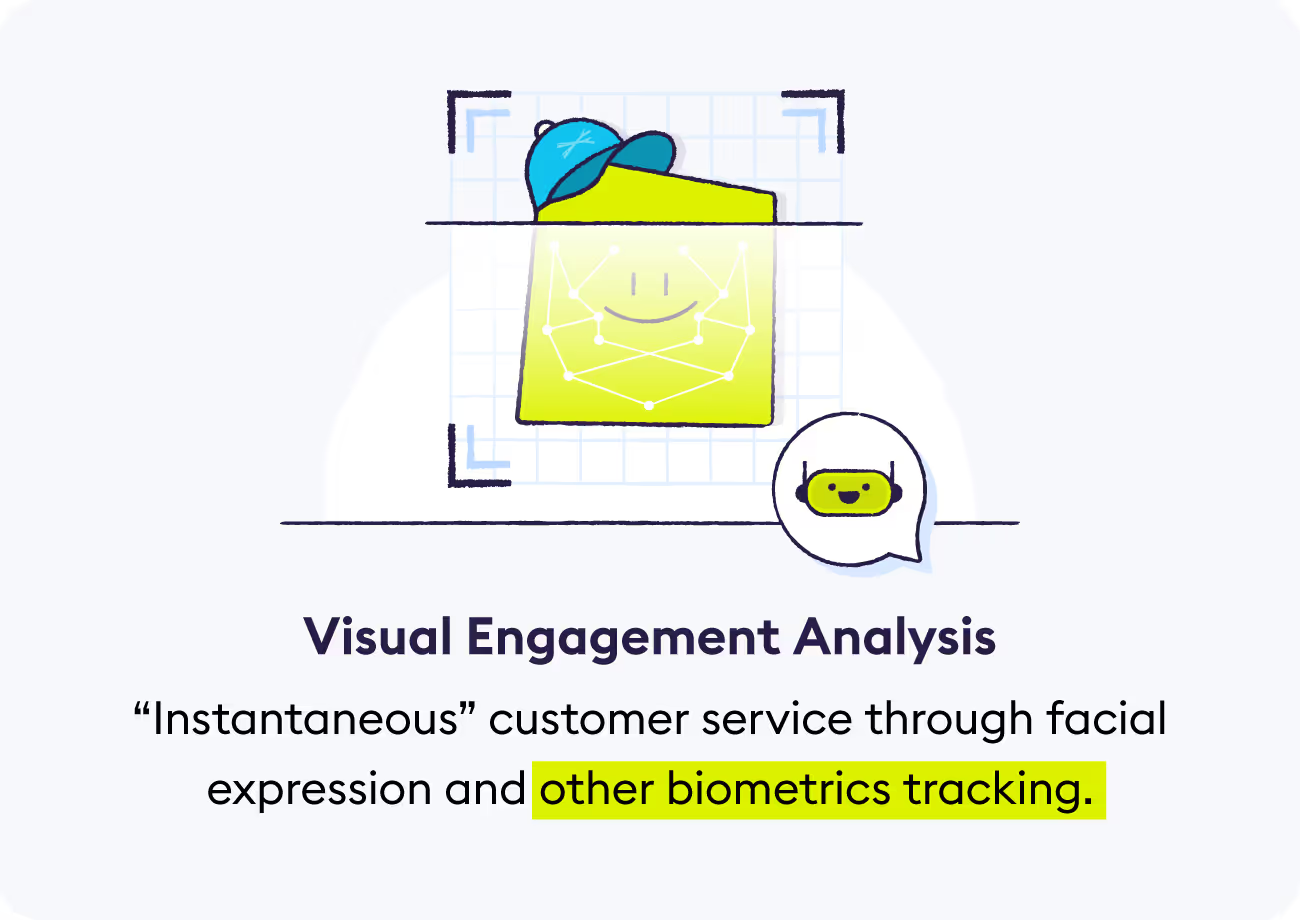
In addition to text analytics, some companies are taking sentiment analysis to the next level by utilizing AI-based engagement technology to track facial expressions. Using biometrics present in facial expressions and vocal tones, AI-powered algorithms are able to track emotions via phone and video calls, and even in face-to-face conversations. This type of analysis helps businesses to capture audience attention and cater to “instantaneous customer service.”
For example, video-conferencing service Zoom is using visual engagement analysis to track when conference attendees are displaying confused expressions, and utilizing this feedback to let the presenter know to slow down. Learn more about how Zoom is using visual engagement analytics to improve the webinar experience.
4. Predictive Personalization
Brands will gain customers for life if they can show that they care about them and their singular customer journey. One of the best ways to do this is to show that you’re paying attention and offering them things that they actually want.
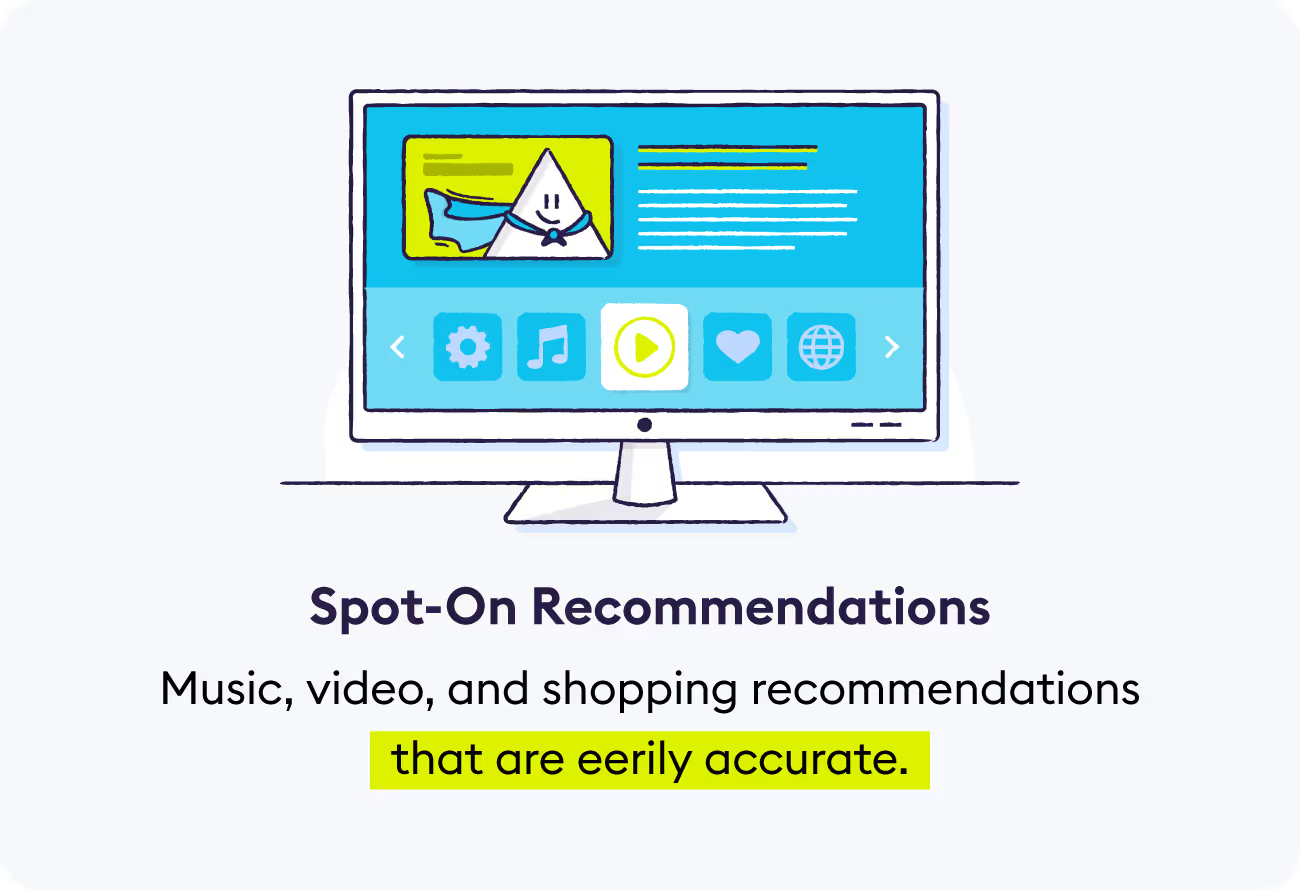
As we went over in the Netflix example above, companies are using AI in order to track customer interest and recommend specific products or services based on their history. Whether this is via content recommendations, email marketing campaigns, paid social ads, or some other channel, most customers appreciate messages that are tailored specifically to them and therefore make their lives easier.
5. Enhanced, Data-Backed Decision Making
The culmination of these AI-enabled CX capabilities is that brands can finally access accurate and actionable data. Companies no longer have to guess what would make their customers happy, and they aren’t constrained by human limitations when it comes to availability and large-scale analysis. By adding automation on top of existing processes, brands can improve their response times and workflows to address customers issues. This enables brands to put resources behind initiatives that will truly affect the bottom line.
For a visual summary of the 10 ways AI is affecting the customer experience on both the user and brand side, take a look at the infographic below:

If you’re ready to start refining your company’s customer experience through cutting-edge AI technology, schedule a consultation with Chattermill to learn how our solutions can help.
AI in Customer Experience: FAQs
How is AI transforming customer experience?
AI is transforming customer experience by enabling personalization at scale, automating support, predicting customer needs, and analyzing feedback faster and more accurately than manual methods.
What are the key benefits of using AI in customer experience?
Benefits include improved efficiency, faster response times, reduced customer effort, more tailored recommendations, and the ability to detect trends and issues in real time.
How does AI improve customer support?
AI-powered chatbots and virtual assistants provide instant responses, resolve common issues, and escalate complex cases to human agents, ensuring faster and more effective support.
What role does AI play in personalization?
AI analyzes customer behavior and preferences to deliver personalized product recommendations, targeted content, and customized offers that improve satisfaction and loyalty.
How can AI analyze customer feedback?
AI processes large volumes of unstructured feedback, detecting sentiment, categorizing themes, and uncovering hidden patterns that guide data-driven improvements.
How does predictive AI enhance customer experience?
Predictive AI anticipates customer needs and behaviors, allowing businesses to act proactively—for example, preventing churn by identifying at-risk customers early.
What industries are using AI to transform customer experience?
Industries such as retail, e-commerce, financial services, healthcare, travel, and SaaS are leveraging AI to provide seamless, efficient, and personalized experiences.
Are there risks to using AI in customer experience?
Yes. Risks include losing the human touch, over-reliance on automation, and potential bias in AI models. Balancing AI with human oversight ensures authentic and customer-centric interactions.




